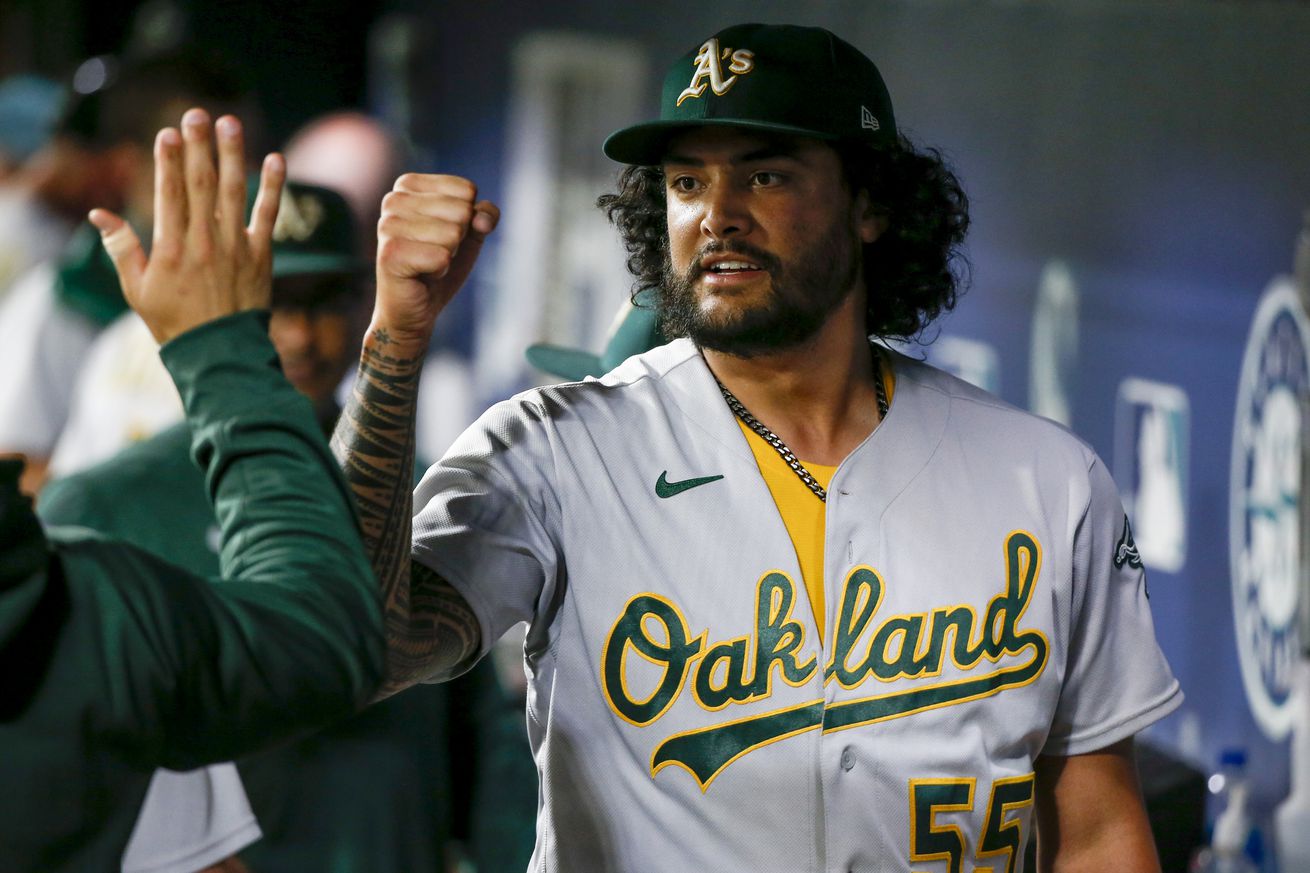
As an observer of pitchers, the Eyeball Scout comes highly recommended having been a left-handed pitching prospect himself. He did peak in Little League, but all careers have their arcs. Some notes from this past week…
Sean Manaea
Manaea has become an expert in changing the eye line with his fastball. Many of his strikeouts recently have come by going up the ladder after sitting lower in the zone. Some pitchers such as Gerrit Cole, can pound the top of the strike zone and be successful but what Manaea is doing is more artful. He is using his fastball slider and changeup “middle-down” and then elevating the fastball at or just above the top of the zone and getting a slew of swinging strikes. If may have taken a while, but the Throwin’ Samoan is living up to every bit of the expectations the A’s had when they acquired him from Kansas City. That 9.87 K/9 IP and /2.16 BB/9IP how many quality strikes Manaea throws in a typical start.
Frankie Montas
In his brilliant start at Houston, Montas pounded the bottom of the strike zone with his fastball and was supremely effective. Part of the reason is that against pitchers who have a nasty splitter the mantra for hitters is generally “If it’s high, let it fly. If it’s low, let it go.” Throwing fastballs at the knees forces batters to swing at pitches that come in low in the zone, making the splitter in the dirt a more effective weapon.
in Houston, Montas got a lot of called strikes at the news with his fastball, and also ample swings and misses when he buried the splitter. “If it’s low, you still don’t know…” Where he got hurt last night was on two elevated fastballs, one to Cal Raleigh and one to Luis Torrens in consecutive at-bats. Both pitches, of course, left the yard and the rest is tragedy.
For Montas, who can also get a lot of ground balls when he’s on, the fastball at the knees is his friend and the high fastball generally is not.
Jake Diekman
What went wrong for Jake Diekman last night? Well, a lot. It started with the fact that he is being used as if he were a pitcher he is not. There isn’t a ton of trust in Sam Moll and so Diekman, the only other lefty in the pen, is being utilized as if he were more effective against left-handed batters.
But he isn’t, and he actually never has been. This year the difference is especially stark, with RH batters only hitting .198/.286/.372 (.281 wOBA) and LH batters enjoying a far more robust .241/.388/.407 (.356 wOBA). For his career, left-handed batters hit .233/.341/.315 (.300 wOBA), generating little power but a rather high OBP. Right-handed batters hit .212/.324/.335 (.292 wOBA).
I think I understand why Diekman struggles to throw quality pitches to lefties. He comes strongly by way of first base and so as he delivers a pitch to a left-handed batter, the hitter’s front shoulder is almost in the path of the pitch. The tendency is to “avoid” hitting the batter by pulling the pitch down and to the outside corner. This has two effects. One is simply to miss low and/or outside with a lot of pitches. The other is to get your mechanics out of whack, and misfire the pitch completely down and away — basically spiking the pitch in the right-hand batter’s box. Sound familiar?
Diekman’s slider has so much break that to throw a strike to a left-handed batter he has to start the pitch practically at the hitter’s front shoulder. When you compensate because you don’t actually want to hit him, the result is what we see from the wild lefty.
Next week we will try to figure out why Diekman often mistakes the backstop for the strike zone against right-handed batters. Perhaps he’s just a tad wild.
Some thoughts to ponder as we wait all day for a chance at redemption, with Chris Bassitt vs. Logan Gilbert at 7:10pm…